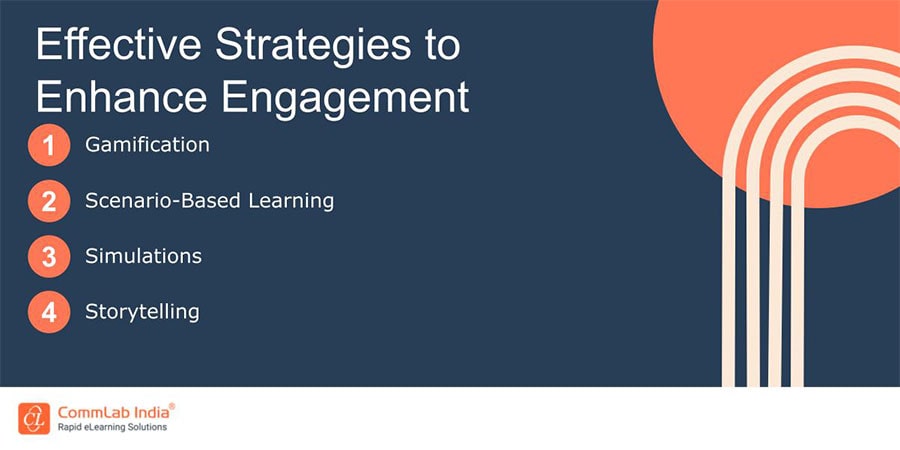Irresistible Virtual Training? Here's the Recipe for it!

In today's digital age, virtual training has become an essential tool for organizations to educate and upskill their employees. However, the challenge lies in making these virtual training sessions engaging and effective. Without the right approach, participants may disengage or fail to absorb the intended knowledge. So, how can you create virtual training that participants find irresistible? Let's delve into the recipe for crafting such sessions.
Trying to Find The Perfect Recipe for Irresistible Virtual Training?
Here’s something important to consider -
- Understanding your audience
- Crafting engaging content
- Interactive learning activities
- Incorporating technology
- Facilitation techniques
- Feedback and evaluation
The Recipe for Irresistible Virtual Training
1. Understanding Your Audience
Before diving into the content creation process, it's crucial to understand your audience thoroughly. Identify their demographics, preferences, and learning styles. Are they visual learners who prefer interactive activities, or do they respond better to traditional lecture-style presentations? Tailoring your content and delivery to match their needs is key to capturing their attention and keeping them engaged throughout the session.
→ Download Checklist Now: 7-Point Checklist Before Launching a New VILT Program
2. Crafting Engaging Content
Once you have a clear understanding of your audience, it's time to craft content that grabs their attention. Incorporate multimedia elements such as videos, images, and interactive slides to break up monotony and stimulate visual interest. Additionally, storytelling and real-life examples can make the content relatable and memorable, increasing its impact on participants.
Breaking content into digestible chunks is another effective strategy for maintaining engagement. Long, dense presentations can overwhelm participants and cause them to lose focus. Instead, divide the content into smaller segments, allowing participants to absorb information gradually and process it more effectively. Here are a few formats you can have for these small chunks.

3. Interactive Learning Activities
Interactive learning activities are essential for fostering engagement and participation in virtual training sessions. Virtual breakout rooms provide opportunities for group discussions and collaboration, allowing participants to interact with each other and share their perspectives.
Polls, quizzes, and interactive Q&A sessions are also effective tools for engaging participants and promoting active learning. These activities encourage participants to think critically about the content and apply it to real-world scenarios, enhancing their understanding and retention of the material.
Simulations or role-playing exercises can further reinforce learning objectives by allowing participants to practice new skills in a safe and controlled environment. These activities promote hands-on learning and provide valuable opportunities for participants to apply theoretical knowledge in practical situations.
4. Incorporating Technology
Choosing the right technology platform is crucial for delivering a seamless virtual training experience. Look for platforms that offer interactive features such as chat rooms, whiteboards, and screen-sharing capabilities. These collaborative tools and features enable participants to actively engage with the content and each other, creating a more dynamic and interactive learning environment.
Providing technical support and troubleshooting resources is also essential for ensuring a smooth training experience. Participants may encounter technical issues or difficulties navigating the platform, so having resources available to help them troubleshoot these issues can prevent disruptions and keep the training session on track.
5. Facilitation Techniques
Effective facilitation is key to keeping participants engaged and focused during virtual training sessions. Engage participants through energetic delivery and open-ended questioning, encouraging them to share their thoughts and perspectives. Use a variety of facilitation techniques to keep the energy level high and maintain participants' interest throughout the session. Here are a few ways you can enhance engagement.

Encourage active participation and dialogue among participants by creating opportunities for them to ask questions, share their experiences, and contribute to discussions. Actively listen to participants' input and feedback, acknowledging their contributions and incorporating them into the conversation whenever possible.
Manage time effectively to cover all planned content while still allowing for ample interaction and engagement. Set clear expectations for the duration of the session and allocate time for breaks and interactive activities to prevent participants from becoming fatigued or disengaged. Here’s a short video to help you understand more about achieving learner engagement in virtual training.
6. Feedback and Evaluation
Soliciting feedback from participants is essential for evaluating the effectiveness of your virtual training sessions and identifying areas for improvement. Use surveys or post-session evaluations to gather feedback on various aspects of the training, including content, delivery, and interactivity.
Analyze the feedback collected to identify strengths and weaknesses in your training approach. Look for patterns or recurring themes in the feedback, and use this information to make informed decisions about how to improve future training sessions.
Continuously iterate and refine your virtual training approach based on feedback from participants. Implement changes and adjustments based on their suggestions and recommendations, striving to create an even more engaging and effective training experience with each iteration.
Wrapping Up!
Crafting irresistible virtual training sessions requires careful planning, creativity, and attention to detail. Remember, the key to success lies in continuously refining and improving your approach based on feedback and insights from participants. By following the recipe outlined in this blog post, you can create virtual training sessions that captivate participants' attention and drive meaningful learning outcomes. As a bonus, here’s a checklist to help you launch your virtual training program, check it out now!



![Top 3 Factors that Influence E-learning Cost [Infographic]](https://blog.commlabindia.com/hubfs/Imported_Blog_Media/elearning-3.jpg)

![ChatGPT in Corporate Training [Top 5 Benefits + How to Use this Powerful Tool]](https://blog.commlabindia.com/hubfs/Imported_Blog_Media/ChatGPT-in-Corporate-Training-Top-5-Benefits-How-to-Use-this-Powerful-Tool.jpg)